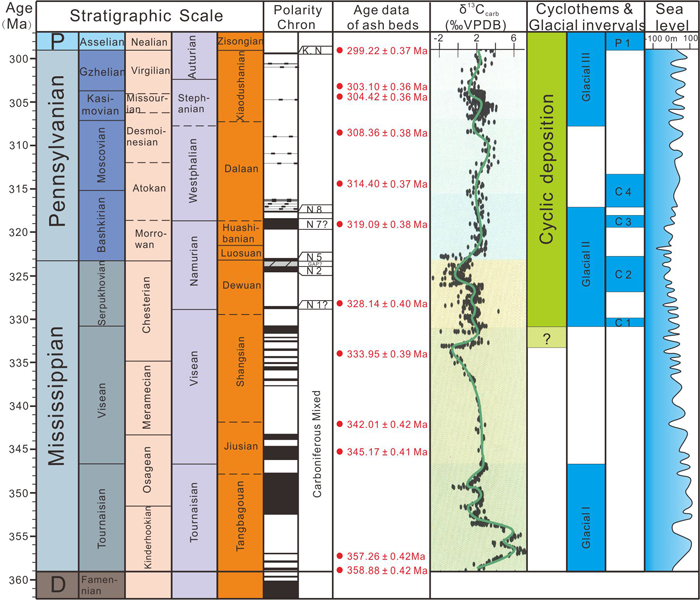|
The Carboniferous is a geologic period and system that extends from the end of the Devonian Period, about 358.9 ± 0.4 Ma, to the beginning of the Permian Period, about 298.9 ± 0.2 Ma. The Carboniferous System has been subdivided into two subsystems, the Mississippian and the Pennsylvanian, and contains seven global stages. The Carboniferous world at the time was severely influenced by the formation of the supercontinent Pangea, which caused major changes in ocean circulation, high bioprovincialism, increased continental weathering rates, waxing and waning of Gondwanan ice sheets, strong fluctuations of global sea-level and cyclic marine sequences, extinction or decline of early Paleozoic biota, and appearance or rapid diversification of reptiles, land plants, amphibians, wingless insects, foraminifera, ammonoids, gastropods and sharks. It signifies Earth’s first episode of widespread, massive coal formation and consequential CO2 variability and marks the glacial maximum during Paleozoic time. Carboniferous marine deposits are rich in fossil rugose corals, foraminifera, brachiopods, ammonoids, crinoids and conodonts. Conodonts and benthic foraminifera successions have served as chronostratigraphic standards in regional and global correlation. Rugose corals, brachiopods, radiolaria and ammonoid are also very useful for discriminating Carboniferous strata at regional levels.

Correlation of regioal Carboniferous stages, geomagnetic polarity scale, Radiometric age, carbon isotopic records, cyclothems and glacial intervals with sea-level change curve (After Smith & Read, 2000; Isbell et al., 2003; Menning et al., 2006; Davydov et al., 2012; Saltzman & Thomas, 2012).
|

